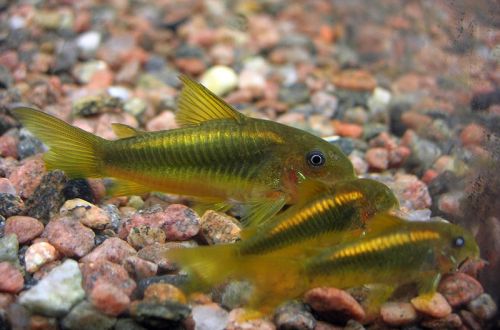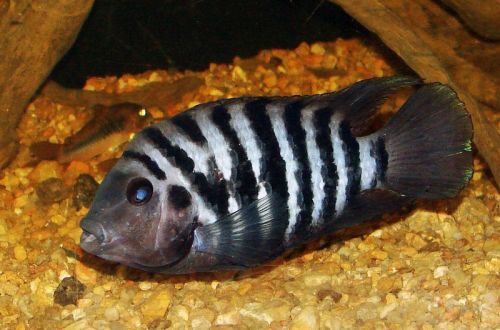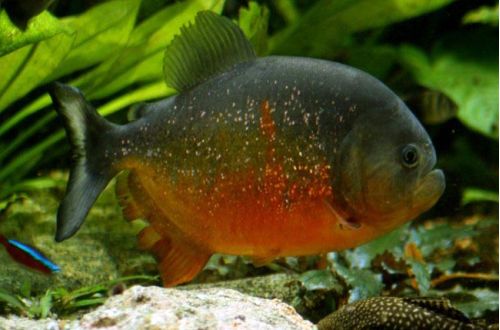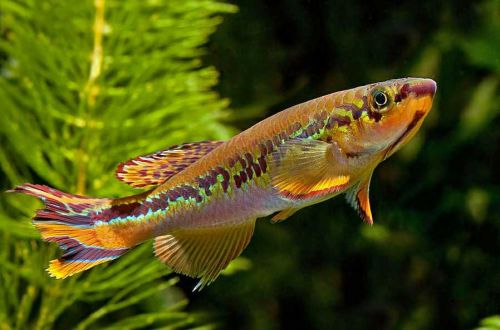
Corridoras melanotenia
Melanothenia Corydoras or Rainbow Corydoras, scientific name Corydoras melanotaenia, belongs to the family Callichthyidae (Shell catfish). The catfish is native to South America. Inhabits the Meta River basin, a large left tributary of the Orinoco. The natural habitat extends to the territory of Colombia and Venezuela. In nature, it inhabits small tributaries, streams, areas of flooded forest and sandbanks.

Contents
Description
Adult individuals reach a length of about 6 cm. Features in appearance are typical for representatives of armored catfish. The fish has two rows of bone plates that replace the usual scales, and the sharp first rays of the pectoral fins, which have turned into spikes.
At first glance, it looks like a Golden catfish, but if you look closely, Corydoras melanothenia manifests golden, yellow hues iridescent in green.
Like most Cory catfish, sex determination is difficult. Males and females are almost identical to each other.
Behavior and Compatibility
One of the most peaceful calm fish. They prefer to live in large flocks. In aquariums, it is recommended to purchase from 3-4 individuals. Compatible with most other types of comparable size.
Being bottom dwellers, these catfish should not be kept together with territorial species, for example, some chars and other catfish.
Brief information:
- The volume of the aquarium – from 50 liters.
- Temperature – 20-23°C
- Value pH — 6.0–7.2
- Water hardness – 2–15 dGH
- Substrate type – any soft
- Lighting – subdued or moderate
- Brackish water – no
- Water movement – light or moderate
- The size of the fish is about 6 cm.
- Food – any sinking food
- Temperament – peaceful calm fish
- Keeping in a group of 3-4 individuals
Maintenance and care, arrangement of aquariums
The optimal size of the aquarium for 3-4 catfish starts from 50 liters. The design uses a sandy substrate, several natural snags, thickets of plants. At the bottom, you can place the bark and leaves of some trees.
Prefer subdued lighting levels. During the daytime, they can hide in shelters, showing the greatest activity at dusk or at night.
Able to breathe atmospheric air, rising to the surface and taking a sip. For this reason, there should be open areas on the surface of the water, free from floating thickets of plants.
Not demanding on water parameters. They adapt to a wide range of pH and GH values, but prefer milder acidic environments. Sensitive to pollution by organic waste (feed residues, excrement). Dirty soil can cause disease and damage to the sensitive antennae in catfish.
During maintenance of the aquarium, it is necessary to clean the soil from accumulated waste. The procedure should be carried out at least once a month.
Food
Omnivorous species. They accept most popular foods. A good choice would be natural food from fresh, frozen or dried daphnia, bloodworms, brine shrimp and other zooplankton.
Breeding / breeding
In favorable conditions, cases of reproduction of Corydoras melanothenia are not rare. Catfish do not show parental care. When breeding, you will need to use a separate spawning aquarium to protect the eggs and fry from predation by adult fish.
More information about breeding Corydoras in home aquariums can be found in a separate article.
Sources: fishbase.org, seriouslyfish.com, scotcat.com





